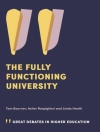How can educators use technology to increase students’ engagement in activities essential to rigorous learning? What are the most effective tools for analyzing, designing, and refining those tasks of learning? And finally, how can we increase the cognitive rigor and thoughtful integration of technology into learning tasks, in order to better prepare students for college and beyond?
In Powerful Task Design, these questions and more will be answered, as you get to know the Powerful Task Rubric for Designing Student Work. Applicable for educators across all disciplines and grade levels, you’ll use the tool to analyze, design, and refine cognitively engaging tasks of learning. This guide will help you
- Explore and use the Powerful Task Rubric piece-by-piece in an easily digestible format to help you delve into the tool’s design components.
- Use technology to complete interactive tasks, and understand first-hand how technology is a critical design component in student task design that brings about more profound and relevant learning.
- Identify opportunities for creating powerful tasks in the areas of engagement, academic strategies, questions, and cognition.
- Supplement your task design arsenal with tools like the Diagnostic Instrument to Analyze Learning (DIAL).
This must-have resource brings together the research and strategies educators need to design engaging, powerful learning tasks. Student performance has a direct correlation to the power of the learning task – this book will help you positively impact both.
विषयसूची
Acknowledgments
About the Authors
Introduction: The Power of the Task
1. The Work of School
A Task Is a Task
Task Predicts Performance
The Design Components of a Task
Technology in a Working Model, or When Terri Met Sally (Ahem, John)
The Powerful Task Rubric for Designing Student Work
2. Analyzing Learning With the Powerful Task Rubric
One Content, Five Tasks
Where Was the Power?
3. The Power of Engagement
The Qualities of Engagement
Interaction as Engagement
A Task Is Powered Up
4. The Power of Academic Strategies
It Starts on the Playground
Strategies of Personal Response
Identifying Similarities and Differences
Summarizing and Note-Making
Note-Taking Becomes Note-Making
Reflection in Note-Making
Nonlinguistic Representations
Generating and Testing Hypotheses
Reflection and Closure
5. The Power of the Question
Where Does a Question Come From?
See-Think-Wonder
Where Do Teacher Questions Come From?
How to Open a Question
Technology and Questions
6. Engaged in What? The Power of Cognition
Cognitive Demand
Learning Through Accepting Meaning
Thinking and Making Meaning
Making Meaning on Top of Meaning
Sliding Across the Cognitive Continua: A Hierarchy, Not a Sequence
Math Cognition and the Task Rubric
Encoding and Memory
7. Power Up: Using the Diagnostic Instrument to Analyze Learning
The Diagnostic Instrument to Analyze Learning
Premises and Research Behind the DIAL
Using the DIAL
Three DIAL Implementations
Tips for the Tool
8. Putting It All Together
Final Thoughts
References
Index












